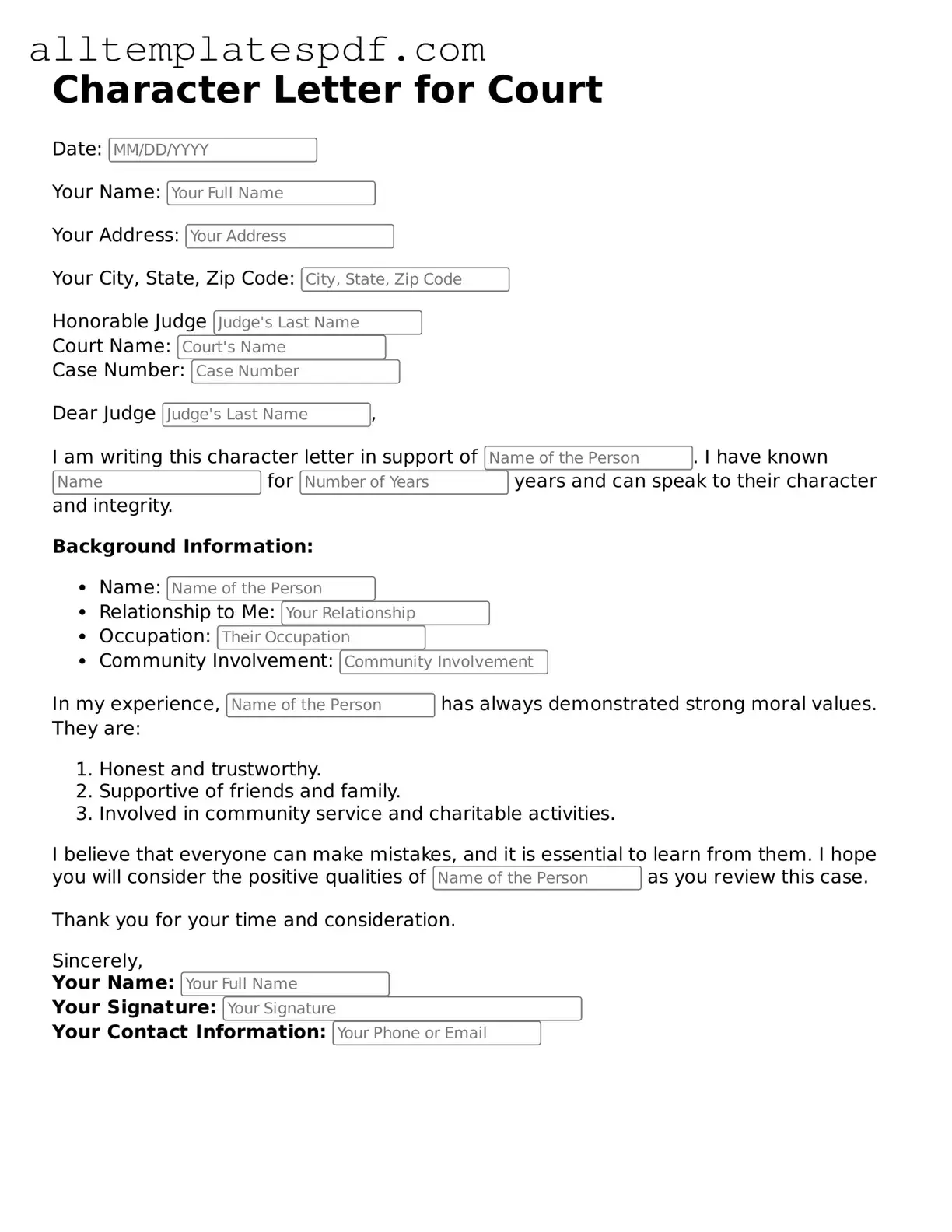Filling out a Character Letter for Court can be a daunting task. Many individuals want to present their best selves to the court, but mistakes can easily occur. One common error is providing insufficient details about the relationship with the person in question. A vague description can leave the judge wondering about the writer’s credibility and connection to the individual. It’s essential to explain how long you have known the person and in what capacity to establish a solid foundation for your letter.
Another frequent mistake is focusing too much on negative aspects. While it’s important to be honest, emphasizing past mistakes without balancing them with positive attributes can paint an unfair picture. A well-rounded character letter should highlight both strengths and weaknesses, demonstrating a comprehensive view of the individual’s character.
People often overlook the importance of addressing the letter to the appropriate court or judge. Failing to do so can make the letter seem impersonal or generic. Personalizing the letter shows respect for the court's process and acknowledges the seriousness of the situation.
Additionally, some individuals neglect to proofread their letters. Spelling and grammatical errors can undermine the letter's credibility. Taking the time to review the content ensures that it appears polished and professional. A clean, error-free letter reflects well on both the writer and the individual being discussed.
Another common pitfall is using overly complex language or legal jargon. The goal is to communicate clearly and effectively, not to impress with vocabulary. Simple, straightforward language makes the letter more relatable and easier for the judge to understand.
Many writers also forget to include specific examples that illustrate the individual’s character. General statements can be ineffective. By sharing anecdotes or particular instances that demonstrate the person’s qualities, the letter becomes more impactful and persuasive.
Lastly, some people fail to sign the letter or include their contact information. A signature adds authenticity, while contact details allow the court to reach out for any follow-up questions. Neglecting this step can leave the letter feeling incomplete and less credible.
